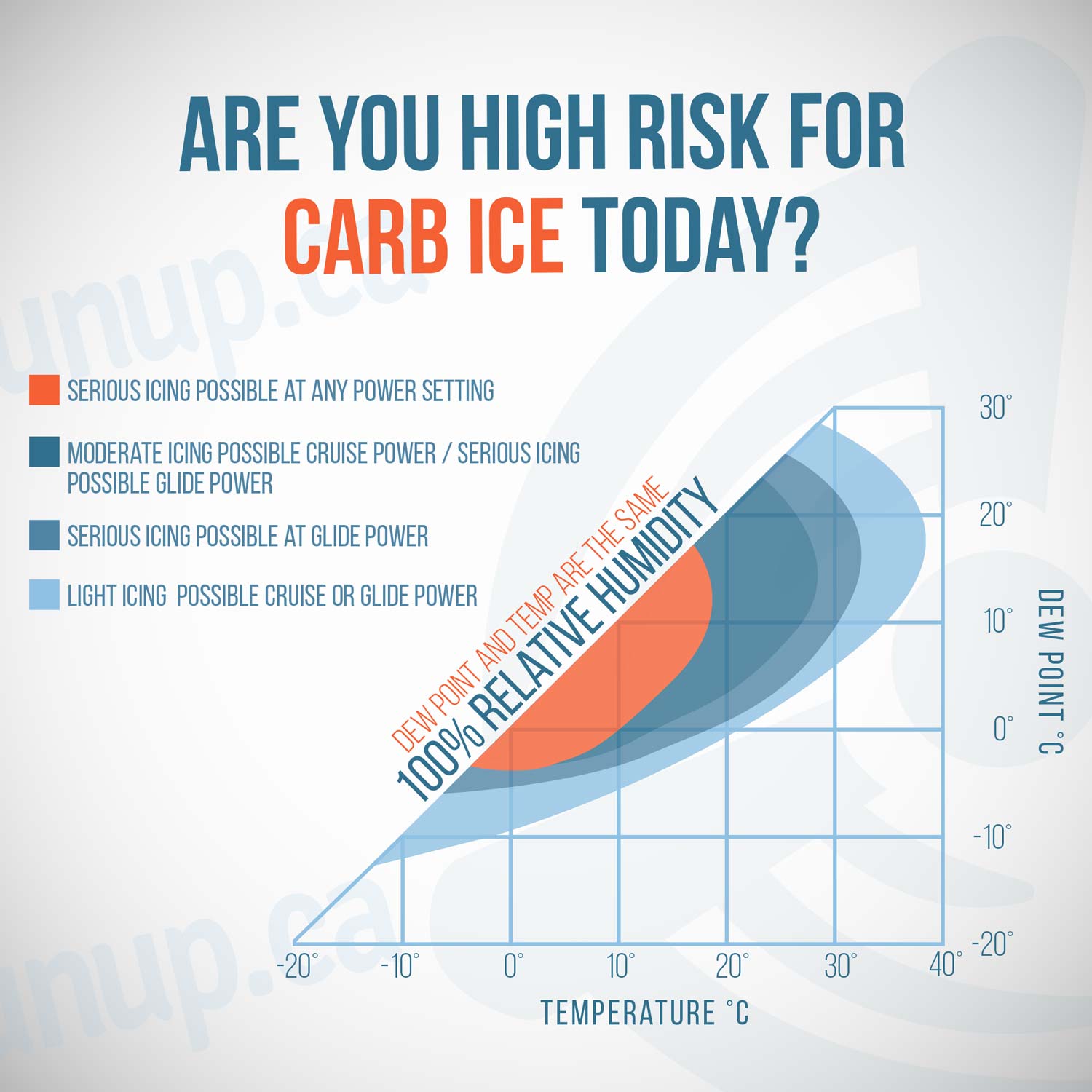What is the potential for carb ice today?
You are at the highest risk for developing carb ice between temperatures of -5°C and +15°C with a small temperature-dew point spread. By plotting temperature and dew point on the graph we can visualize and understand what temperatures have the most potential for carb icing. Before you fly check the temperature dew point spread and check for carb icing by applying carb heat regularly.
How do you know if you have carb ice and what should you do?
If you have carb ice your engine will start running rough. You could be out of fuel so make sure you check that, too! If you suspect carb ice turn on the carb heat and leave it on. As the ice in the carburetor melts the engine will start to run even rougher. Make sure you don’t turn off the carb heat at this point. The engine is running rougher because it is trying to burn water as fuel. Don’t panic! When the carb ice has melted and moved through the engine your engine power will resume to almost normal. Remember that carb heat directs warm, less dense, air to the engine and that will produce a drop in RPM. If you suspect the carb ice is gone at this point turn off the carb heat to resume normal engine power. Make sure to continue to monitor the carb for icing by intermittently applying carb heat.

Leave A Comment
You must be logged in to post a comment.